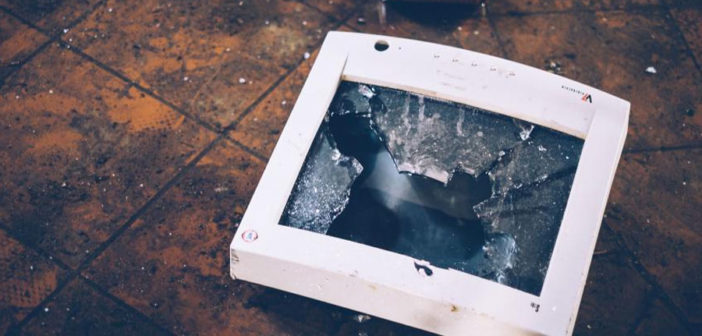Driving through small-town South Carolina on my way to a conference, I spotted a charming store called The Scottish Mill Shop. Signs on the building peddled “Kilts and Sweaters,” “Scottish Cashmere,” and other wonders of The Highlands. Being in no hurry, my first thought was to turn around and check out all the fabulous tartans and tweeds. It’s not every day a McKee from New Mexico gets to stop in a shop like that.
But then I had a second thought: There’s probably nothing in The Scottish Mill Shop that I couldn’t find somewhere online. So I kept driving.
I’d be lying if I said it didn’t nag me a bit that an experience I wouldn’t have missed 10 years ago did not so much as merit a tap on the brake. As I continued down the road, my mind turned to the unsettling impact of creative destruction, to which so many companies in every industry succumb — particularly retail, of late.
“Creative destruction” is a term coined by Joseph Schumpeter in 1942 to explain the relentless advance of a free economy. Innovation can’t be stopped as it supplants the old with the new, the outdated with the novel, the stale with the fresh, at an inexorable pace.
Creative destruction is why phones get cheaper, cars get safer, goods of all kinds become more plentiful and our standard of living continues to rise. From a macroeconomic standpoint, it’s all win.
From a microeconomic standpoint, however, not so much. As new products are developed, old ones become obsolete. As new companies form, old ones fold. As ecommerce grows, retail shrinks. And as new career paths spring forth, old ones wilt.
Creative destruction, as good as it is for the economy as a whole, results in continual dislocation of individual companies — and individuals’ jobs. It’s as unpleasant as it is uncontainable.
It’s common these days for people to complain about creative destruction, as if it’s an effect of some cause that business or government can change. But just as there’s no stopping a tidal wave, creative destruction is a fact of life; our only choices are to ride it or be swamped. That may, in fact, be one way of understanding the fundamental calling of corporate leadership, not to mention our own personal career paths — embracing “creative” to avoid “destruction.”
Consider the startup. Startups are, by definition, focused on the “creative.” An alert and enterprising entrepreneur recognizes a hole in the marketplace, a need that’s not being met, or something that can be done differently, better or cheaper, and decides to seize the opportunity. Most startups fail, but many succeed, and some radically change the world.
Established companies, by contrast, tend to be occupied by the “destruction” side of the equation. Oh, they don’t think of it in those terms, but the very fact that they’re establishedmeans they have a vested interest in preserving the status quo, or at best improving it incrementally. Some companies have better survival skills than others, and some can stave off destruction for years or even decades. But patents expire, trade secrets leak, technology advances, tastes change, and economies contract, and eventually the Grim Reaper arrives at every door.
The best managed firms effectively navigate issues like these for some time, but ultimately, and always, they succumb.

How to delay such a fate? I think it would be a good idea for every company to have a CAO — a chief attack officer — whose job it is to identify and exploit what, sooner or later, may bring the company down. Only the biggest corporations could afford a dedicated person in such a role; that’s OK. It may be even better to cultivate a corporate culture that fosters a little bit of CAO in everyone.
But that’s easier said than done. Dee Hock, founder of Visa International, once quipped, “The problem is never how to get new, innovative thoughts into your mind, but how to get the old ones out.”
Indeed. It requires a continual reassessment of what your company’s core competency really is and a persistent willingness to give up or strip away anything that isn’t it. Oh, and you have to be OK knowing that what you discover could result in roiling internal change that might make enemies of your allies. That’s the reason why companies pursuing disruptive innovation tend to set up external skunkworks.
That said, an inside CAO has an advantage that outside upstarts can’t match: Enterprise familiarity. You understand the industry. You get how the company really works. You know where the money gets made, and lost. You can see cracks in the foundation and holes in the walls.
And, with a little imagination and exploration, you can probably envision where new technology might disrupt the status quo. Knowing that sooner or later your revenue model is going to be disrupted (and perhaps destroyed) should be more than enough motivation to try to crack the code from within.
Unfortunately, healthy internal disruption remains more the exception than the rule. I am happy to report that it appears The Scottish Mill Shop is paying attention. Once I returned from my trip I was relieved to find that I could, indeed, find their wares online. In fact, you can find them too, here, at the company’s ecommerce site. It’s nice to see they’re adapting to the forces of creative destruction, and that I can provide a referral. Makes me feel a little less like a heel for not stopping in.
–
Featured Image: Simson Petrol/Unsplash
This article first appeared in www.smartbrief.com
Seeking to build and grow your brand using the force of consumer insight, strategic foresight, creative disruption and technology prowess? Talk to us at +9714 3867728 or mail: info@groupisd.com or visit www.groupisd.com



